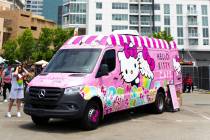Mob Museum in Las Vegas ventures into fashion with ’20s flapper exhibit


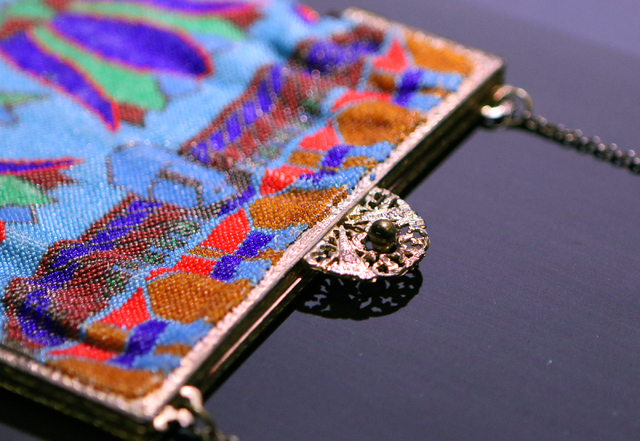
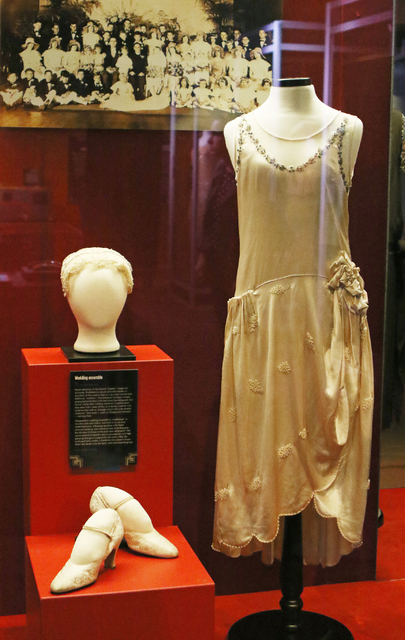

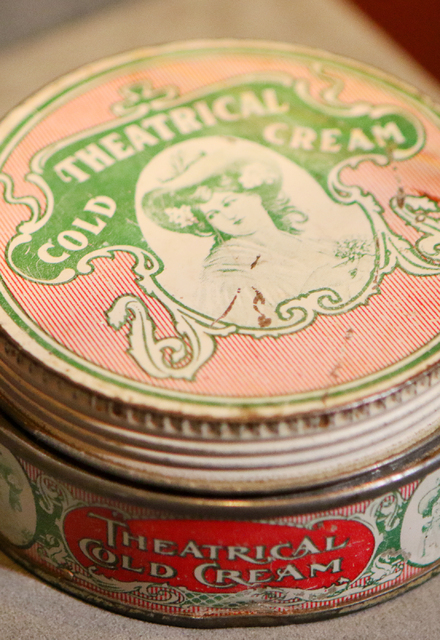

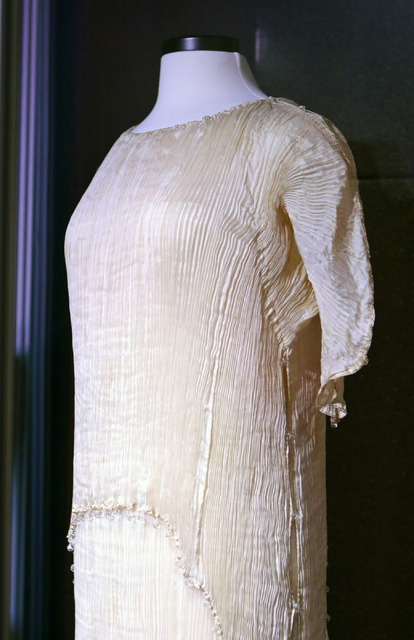

Glittering, knee-length dresses, painted lips, a drink in hand. In a bar today, the image wouldn’t warrant a second look from most patrons. But on women in the 1920s — popularly called flappers — it was unprecedented, fixing the iconic figure in the national imagination as a symbol of the new roles and rights of women.
“They were the culmination of a good half-century of change,” says Deirdre Clemente, associate director of public history at UNLV.
In larger cities such as New York, Chicago and Los Angeles, the illicit drinking venues and their patrons were changing the social and cultural landscape. (Las Vegas, little more than a railroad stop at the time and under a statewide ban from gambling, did have speakeasies to keep the booze and games flowing.)
It’s an age that has been immortalized in pop culture as an eruption of wild, loose living, particularly for the women of the era, who were wearing shorter skirts, working outside the home, marrying later and drinking in somewhat-public venues.
The “Ready to Roar” exhibit at the Mob Museum, which opened Friday and runs until February, looks at the fashion of this period. Clemente and the graduate students in her public history seminar developed the exhibit with the intention of debunking the misconception of the “flapper” as a suddenly liberated woman.
“We really wanted to complicate the idea of the flapper as this flash in the pan,” says Clemente, who specializes in 1920s fashion and consulted for Baz Luhrmann’s “The Great Gatsby.” For 40 years leading up to Prohibition, women had become more economically and politically active, culminating in 1920 when they achieved the right to vote.
Through the most iconic artifacts of the era — beaded and sequined dresses, purses and other accessories — the exhibit explores how fashion changed, how the role of women changed and how those two events occured in tandem. In shorter, looser dresses, women could lift their arms, take full strides and dance.
“It’s the rise of practicality of fashion,” Clemente says.
And by carrying purses, women didn’t need to be accompanied by a man with pockets.
“At this point, you have women walking more, catching buses, they’re going to work, they’re going out to date. They need to carry house keys, they need to carry money,” student curator Evan Casey says.
The artifacts in the exhibit are on loan from Death Valley National Park, the Nevada State Museum, Spring Mountain Ranch, Clark County Museum, as well as from individuals in Las Vegas and the East Coast.
The exhibit is unlike anything else the Mob Museum has shown in its five-year history. It’s the first fashion-oriented exhibit and the first collaboration of this scope with UNLV. Though there’s no mention of mobsters or violence, the topic and time period fit into the overall story the Mob Museum tells, says director of content Geoff Schumacher. The same speakeasies that the flappers socialized in bred organized crime as we know it.
“When you think about the organized crime story or history, it’s a very male-dominated thing, right? I mean the bad guys are guys, for the most part,” Schumacher says. “We found, I think, a very relevant and interesting way to incorporate the story of women into our museum and for me, that’s very gratifying.”
That story is one that Clemente, Casey and the other students in UNLV’s public history seminar hope to clarify. Those glittering dresses weren’t as short or revealing as many imagine, and ultimately, proclaiming that women became liberated during this era would be inaccurate. While the flappers did participate in activities their predecessors had not, in the following years, fewer women voted, skirts lengthened and many of the women in sparkling dresses at speakeasies eventually fulfilled cultural expectations by getting married and having children. Social change, says Clemente, doesn’t have a linear, consistently upward trajectory.
“As a historian,” Clemente says. “I hope people leave with (this) idea of complicating these cultural icons that we make.”
Read more from Sarah Corsa at reviewjournal.com. Contact her at scorsa@reviewjournal.com and follow @sarahcorsa on Twitter.







